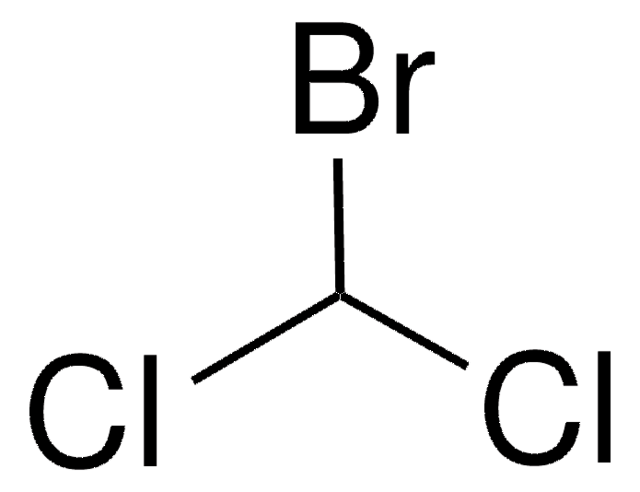139181
Bromodichloromethane
≥97%
Synonyme(s) :
Dichlorobromomethane
About This Item
Produits recommandés
Niveau de qualité
Essai
≥97%
Forme
liquid
Contient
potassium carbonate as stabilizer
Indice de réfraction
n20/D 1.497 (lit.)
pb
87 °C (lit.)
Pf
−55 °C (lit.)
Solubilité
water: insoluble
Densité
1.98 g/mL at 25 °C (lit.)
Groupe fonctionnel
bromo
chloro
Chaîne SMILES
ClC(Cl)Br
InChI
1S/CHBrCl2/c2-1(3)4/h1H
Clé InChI
FMWLUWPQPKEARP-UHFFFAOYSA-N
Vous recherchez des produits similaires ? Visite Guide de comparaison des produits
Application
Actions biochimiques/physiologiques
Mention d'avertissement
Danger
Mentions de danger
Conseils de prudence
Classification des risques
Acute Tox. 4 Oral - Carc. 2 - Eye Dam. 1 - Skin Irrit. 2 - STOT SE 3
Organes cibles
Respiratory system
Code de la classe de stockage
10 - Combustible liquids
Classe de danger pour l'eau (WGK)
WGK 3
Point d'éclair (°F)
Not applicable
Point d'éclair (°C)
Not applicable
Équipement de protection individuelle
Eyeshields, Faceshields, Gloves, type ABEK (EN14387) respirator filter
Faites votre choix parmi les versions les plus récentes :
Déjà en possession de ce produit ?
Retrouvez la documentation relative aux produits que vous avez récemment achetés dans la Bibliothèque de documents.
Les clients ont également consulté
Notre équipe de scientifiques dispose d'une expérience dans tous les secteurs de la recherche, notamment en sciences de la vie, science des matériaux, synthèse chimique, chromatographie, analyse et dans de nombreux autres domaines..
Contacter notre Service technique










